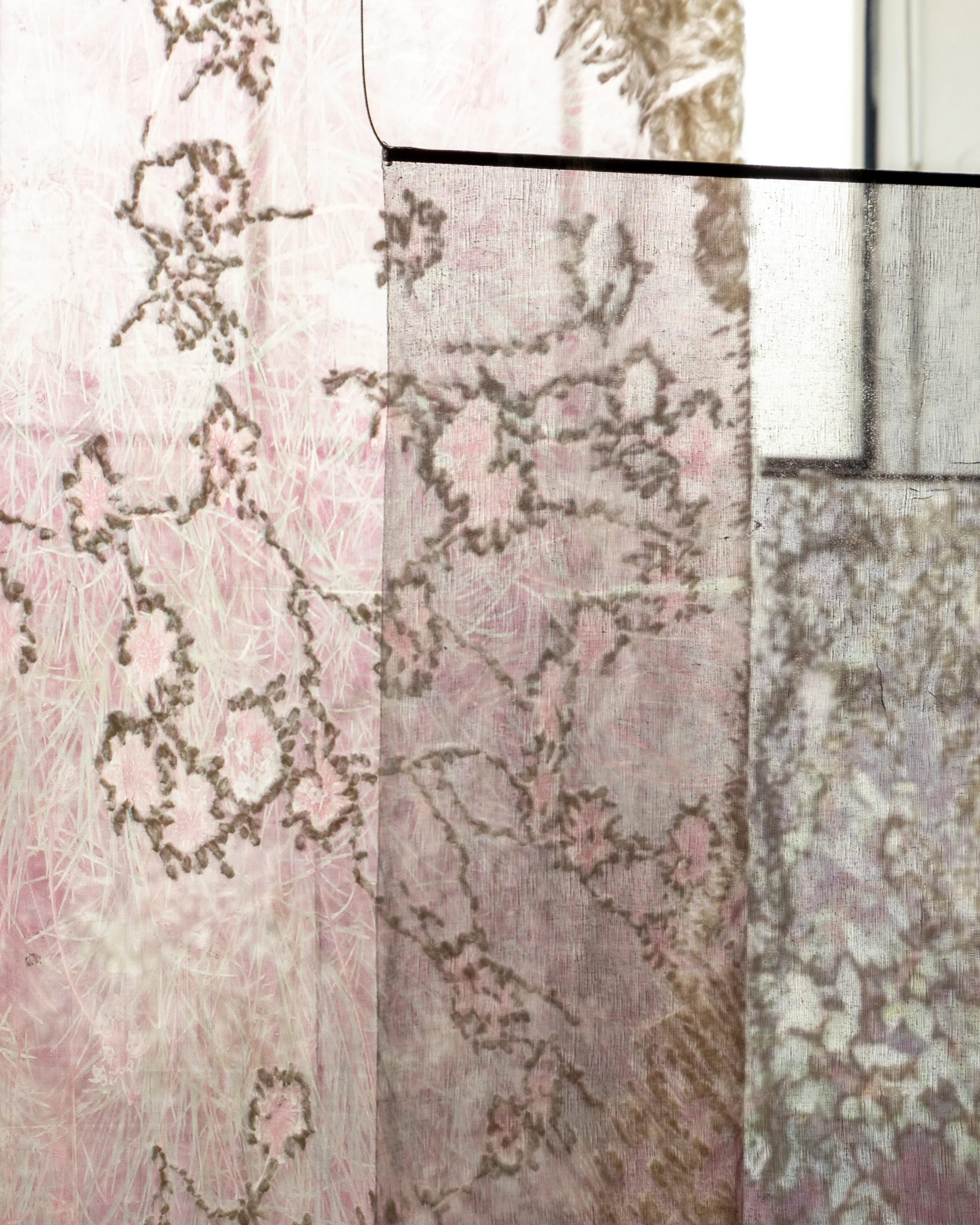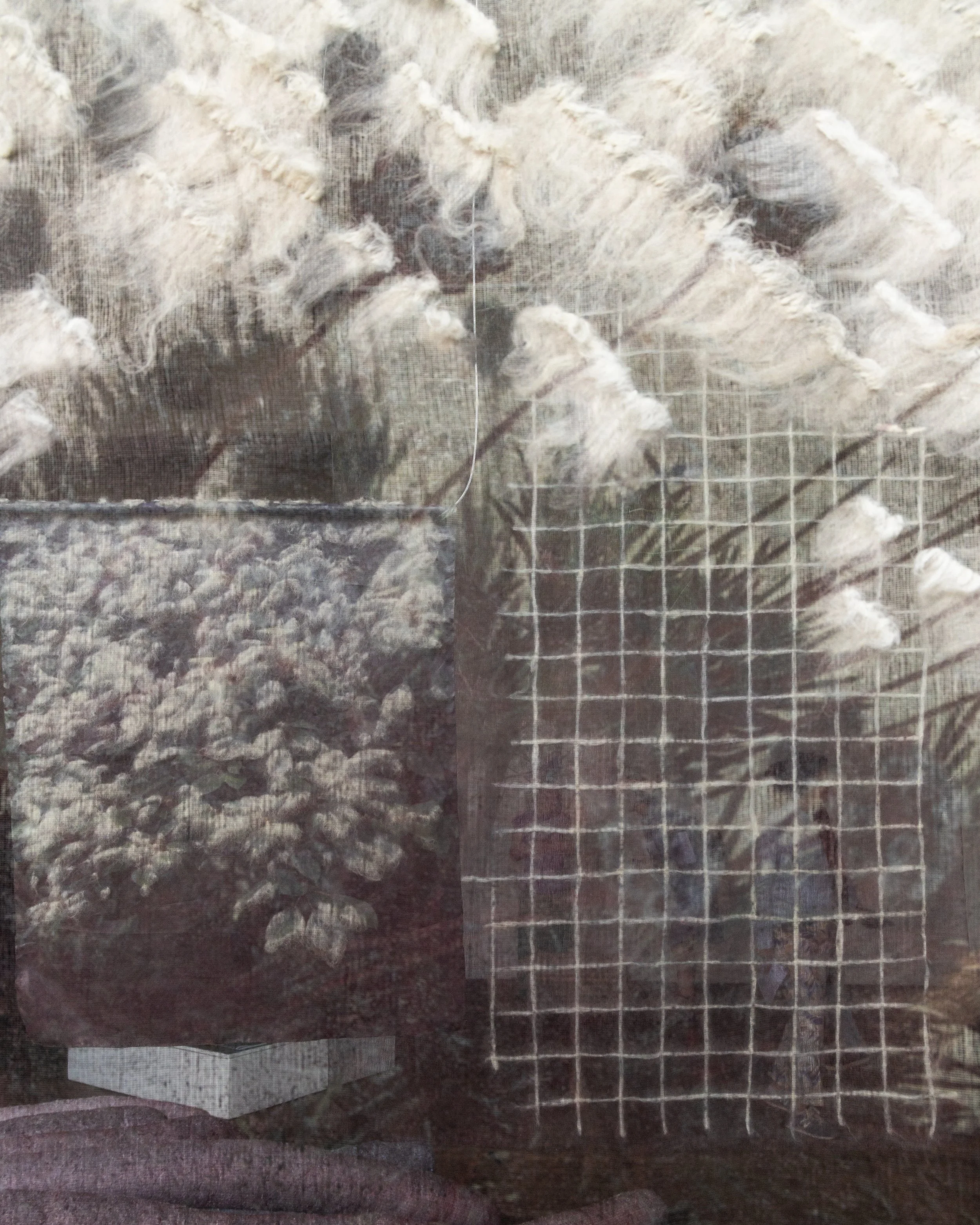Talent Talks: Azul Espirito Santo
Azul Espirito Santo draws on her Peruvian and Portuguese heritage to craft textiles inspired by nature’s cycles of impermanence. Initially disconnected from her urban surroundings in The Hague, she found beauty in the everyday. Using silk, wool, and hemp, her work blends sublimation and needle felting, reflecting the harmony between nature and sustainable craftsmanship.
Photo by Aaryan Sinha
Could you please introduce yourself?
I am 23 years old with roots in both Portugal and Peru. My work revolves around a deep connection to nature, and I express that through my textile creations. I recently graduated in textile design from The Hague, where I explored how nature’s principles, especially those practiced by Peruvian Indigenous communities, can be integrated into sustainable textile designs.
Having graduated recently, how do you look back on your studies?
Having recently graduated, I look back on my studies at The Royal Academy of Art, The Hague, with a sense of growth. While I initially felt naive about what textiles truly encompass, I learned a lot of valuable techniques along the way. That early naivety, combined with the realization of how essential it is to truly understand what you're doing, helped me find my own path, always supported and encouraged to experiment with new concepts and techniques, which allowed me to fully explore my creative visions.
Photo by Aaryan Sinha
Could you please tell us something about your graduation collection/project?
My graduation project focused to understand better the mentality and philosophies of Indigenous communities in Peru who utilize their natural surroundings to create textiles. Through this journey, I found inspiration in my immediate surroundings, which had previously escaped my notice as I sought authenticity to only come from Peru. My project revolved around a moment of introspection experienced between The Hague and Portugal, where I felt subtle and direct forms of communication between nature and myself. A interplay between materials and the environment, guided by a sense of organic connection and Indigenous philosophies. I find a sense of familiarity with the works of artists like Cecilia Vicuña, who also highlights the dynamic exchanges between the body, objects, and nature. And how can we learn as designers to have the intuition to reflect ecological awareness.
Photo by Aaryan Sinha
Which materials, techniques, programmes and/or applications are you mostly interested in?
I primarily work with natural materials like silk, cotton, hemp, and wool. My main technique is needle felting, and I use sublimation to print onto fabrics. One of the challenges I faced was ensuring that sublimation would effectively permeate these natural materials, which led me to experiment with various coating ingredients and fixation methods. I’m fascinated by how nature interacts with the inherent properties of these materials, allowing some designs to naturally fade while coating others for durability. Needle felting also helps create secondary compositions that outlast nature’s impermanence.
Photo by Aaryan Sinha
The exhibition you are a part of looks into meaning of regeneration. What does regeneration mean to you and your work?
In my work, regeneration integrates practically as I focus on nature’s properties, where nothing is permanent, yet everything is part of ongoing renewal. I relate to regeneration because, like precariousness, it mirrors the way my textiles behave: in a controlled environment, they can withstand time, but in an outdoor setting, the wind could easily blow the fibers away. This was important for me to create work that does not impose on nature but remains balanced, representing a living, evolving relationship with the environment. In this context, regeneration should always be a core philosophy in textile design. If we want to keep creating, we must ensure a process that remains sustainable. While regeneration can sometimes seem at odds with the idea of a lasting, high quality design, it’s about creating within a natural lifespan. Using natural materials allows designs to last long, but not longer than natural lifetimes, reflecting nature’s cycles and fostering sustainable, cyclical processes where materials and methods coexist harmoniously with the environment.
Photo by Aaryan Sinha
How do you perceive the meaning and importance of community within the fashion field?
I perceive community as a crucial foundation for enriching our minds into shaping the future, and just as much in fashion. It’s vital for transforming how we design and create. The community I’ve built with other growing designers and makers is something I want to continue nurturing, as collaboration is always a significantly fruitful outcome. By working together within a positive community, we can create bigger changes in the fashion industry’s mindset, challenging the current trends that often overshadow the good.
How do you view the future of fashion? And your own role therein?
I’m not entirely sure where the future of fashion is headed, but I’m clear on my own aspirations within art, design, nature, and sustainability. I see vast possibilities for fashion to evolve in positive directions, and I hope my work can inspire people to think about fashion more in tune with nature. My role, as I see it, is to create fabrics that can be adapted into wearable pieces, steering people toward enjoying and finding the beauty in sustainable, nature-inspired designs. A possibility of my role in fashion could be creating meters of felted/sublimated fabric that could eventually be transformed into clothing.
Photo by Aaryan Sinha





